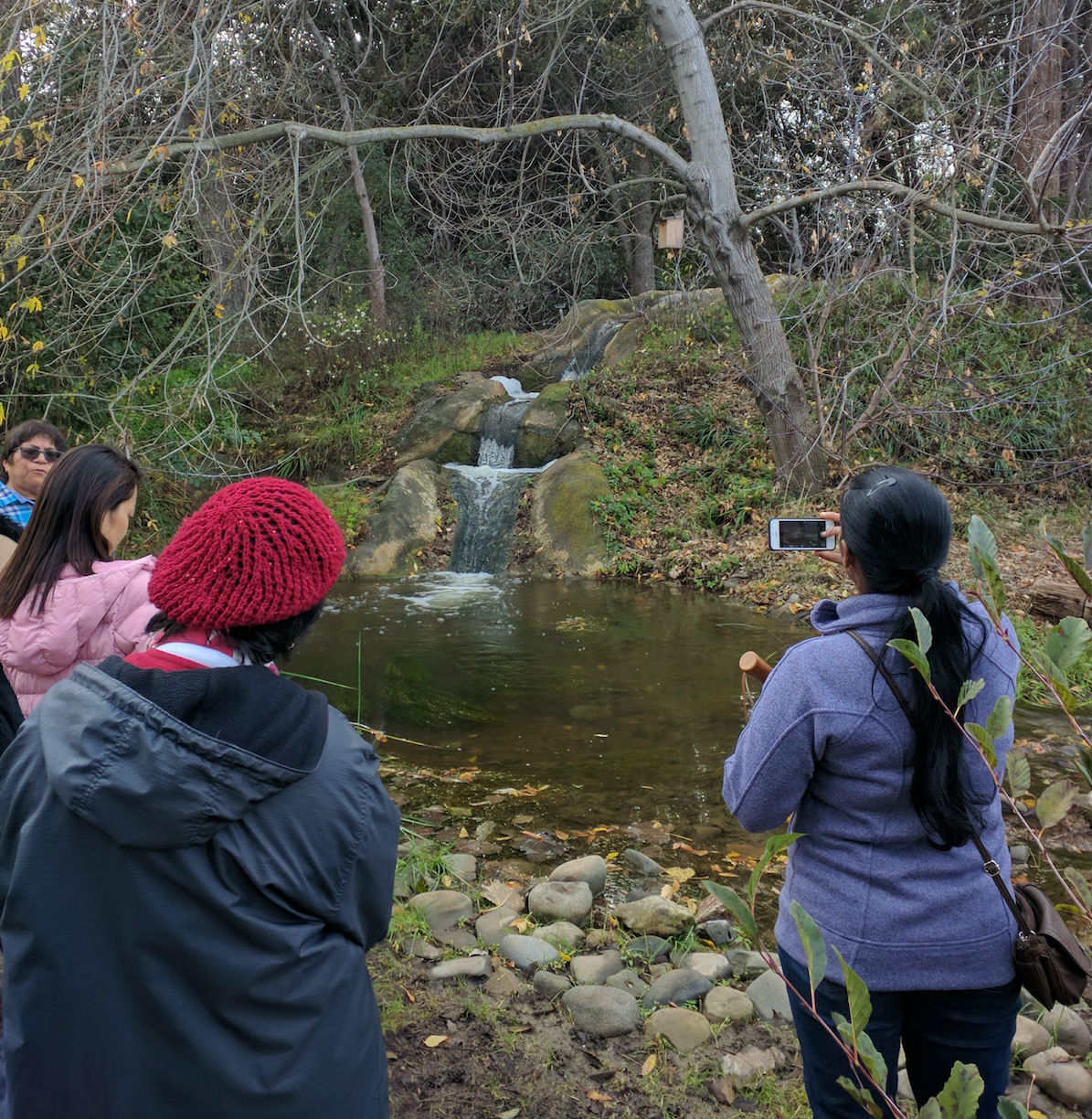Overview
The Environmental Studies Department offers the following ten General Education (GE) courses
Environmental Science (ESCI):
- ESCI 1: Environmental Science (4 units)
- ESCI 1L: Environmental Science Laboratory (1 unit)
- ESCI 19: Environmental Biology (5 units – lecture plus lab)
- ESCI 30: Introduction to Conservation Biology (5 units - lecture plus lab)
- ESCI 60: Restoration Ecology (5 units - lecture plus lab)
Environmental Studies (ES):
- ES 1: Introduction to Environmental Studies (4 units)
- ES 2: Introduction to Sustainability (4 units)
- ES 3: Imagery of the Environment (4 units)
- ES 4: Energy, the Environment and Society (4 Units)
- ES 50: Intro to Environmental Resource Managment & Pollution Prevention (4 units)
Most of our GE courses are offered every quarter, including summer session. Check the current De Anza Class Schedule for upcoming offerings. Course descriptions are provided below.
General GE Requirements
Current General Education requirements for degree or college transfer are specified in the following handouts. Use the appropriate handout to see which Environmental Science (ESCI) and Environmental Studies (ES) courses fit into your academic plan.
- GE Requirements For DeAnza Associates (AA/AS) Degrees
- GE Requirements For Transfer to All Cal State University (CSU) Campuses
- GE IGETC Requirements For Transfer to All UC and CSU Campuses
GE Course Descriptions
Environmental Science (ESCI) GE Courses
ESCI 1: Environmental Science (4 units)
An introductory course designed to expose students to environmental science. Human interactions with the environment and their consequences for living and nonliving systems will be examined. Topics will include evolution, ecology, biodiversity, human population dynamics, natural resource use, pollution, environmental degradation, climate change, marine and freshwater resources, and environmental policy.
ESCI 1L: Environmental Science Laboratory (1 unit)
An introduction to environmental science as a branch of the sciences including the scientific method and its relation to the scientific field in a laboratory and field setting. Applications of scientific, environmental, ecological and sustainability principles.
ESCI 19: Environmental Biology (5 units – lecture plus lab)
An introduction to environmental biology as a branch of the environmental sciences and its relation to the scientific field. Review of the principles of environmental biology, ecology and conservation as they relate to natural resource use, the biodiversity crisis, pollution, human population, and climate change.
ESCI 30: Introduction to Conservation Biology (5 units - lecture plus lab)
An introduction to biodiversity and conservation biology as a branch of the environmental sciences. This course will focus on species richness, genetic diversity and ecosystem diversity through the exploration of contemporary biodiversity and conservation issues. Adaptive, community-based conservation techniques applied to develop practical problem-solving approaches to the biodiversity crisis including habitat fragmentation and biological monitoring. In addition cultural, economic and philosophical aspects of biodiversity conservation will be explored.
ESCI 60: Restoration Ecology (5 units - lecture plus lab)
An introduction to ecological restoration. Includes a review of ecological theories as necessary for restoration based projects. The Cheeseman Environmental Studies serves as a laboratory for students project-based, experiential learning.
Environmental Studies (ES) GE Courses
ES 1: Introduction to Environmental Studies (4 units)
An introductory study of environmental issues, their underlying causes and potential solutions from an interdisciplinary perspective, considering history, culture, philosophy and ethics, law and regulation, politics, economics, and management practices. Topics include current environmental issues related to nature/wildlife preservation, natural resource use and conservation, pollution control and prevention, and energy use and climate change. Students learn how their personal and career choices and actions can protect nature, preserve natural resources, prevent pollution, reduce energy demands and decrease climate change impacts for the benefit of current and future generations.
ES 2: Introduction to Sustainability (4 units)
An introduction to sustainability through environmental, social, and economic evaluation. Students will learn the influence of societal resource use, distribution, and waste on earth. Climate change, power dynamics, and leadership are observed as influences on sustainability.
ES 3: Imagery of the Environment (4 units)
An introduction to the academic discipline of Environmental Studies through historical and contemporary analysis of nature-based imagery. What those representations indicate about past and present environmental changes will be discussed. Roles of the artist as naturalist, scientist and conservationist will be explored.
ES 4: Energy, the Environment and Society (4 Units)
Energy plays a dominant role in our modern global industrialized society. Rapid growth of human populations worldwide, combined with increases in fossil fuel related energy to support human activities have caused social, environmental, health and safety, political and economic ramifications. Many issues faced in the world we live in are the result of the extraction, production, transmission, distribution and consumption of energy. Energy and its negative impacts know no social, economic, cultural, racial, gender, religious, political, geographic or environmental boundaries. This course examines how our energy demands and its ramifications affect everyone on the planet.
ES 50: Intro to Environmental Resource Mgmt & Pollution Prevention (4 units)
An introduction to the interrelated fields of Environmental Resource Management (ERM) and Pollution Prevention (P2), surveying the areas of environmental law and regulation, environmental health, pollution control and prevention, environmental impact assessment, sustainable/"green" design, climate protection, and efficient/sustainable use of our fundamental environmental resources (air, water, land, food, climate, and extracted materials including timber, energy resources, and minerals/mined materials). Explores associated job & career opportunities in the ERM & P2 fields, along with academic career pathways.

